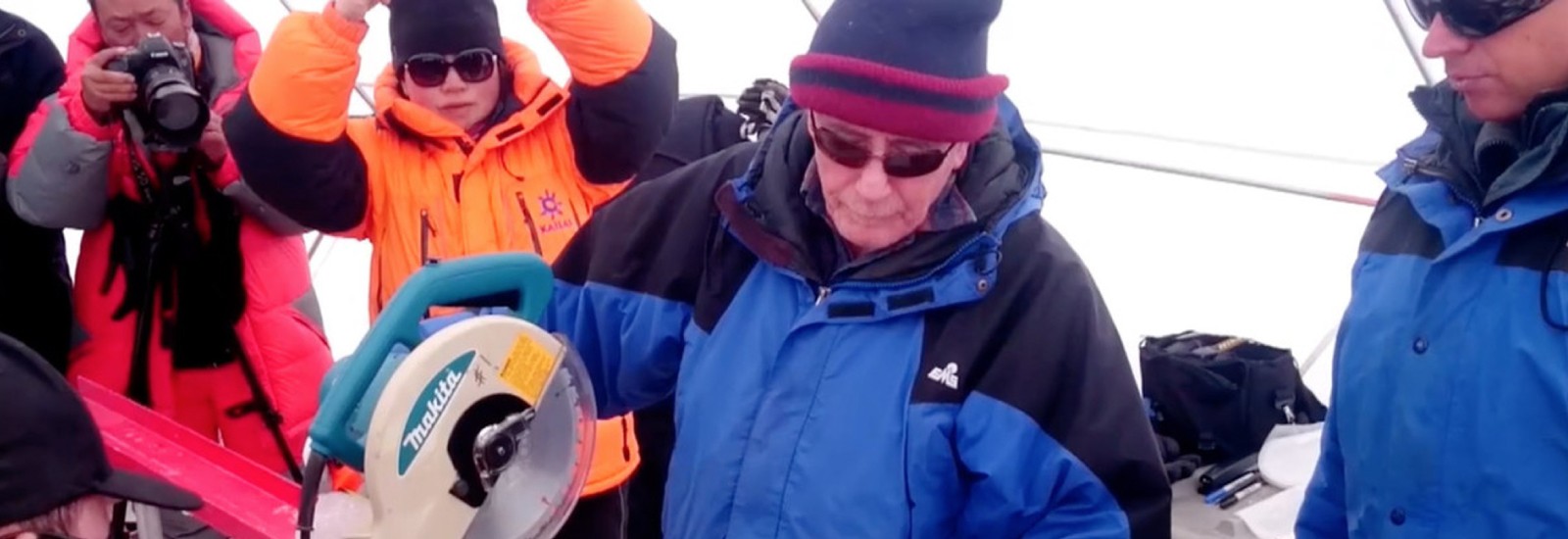Ice from glaciers around the world, undisturbed for centuries, show changes in how societies functioned throughout history – and will likely hold a record of the current impact of the COVID-19 pandemic for future generations.
The story of how the pandemic is affecting societies around the world is still unfolding, but ice accumulating on high-elevation ice fields around the world, as well as in Greenland, is almost certainly collecting physical, chemical and biological evidence of this time, said two researchers who have devoted their professional lives to studying ice.
“These records will be locked into the ice and preserved,” said Lonnie Thompson, distinguished professor of earth sciences at The Ohio State University and a senior research scientist at Ohio State’s Byrd Polar and Climate Research Center. “And that means that 100 or 200 years from now, that ice will be showing anything that is in the atmosphere now, and that will tell future generations about what is happening now.”
There are signs already that the current COVID-19 pandemic is affecting Earth’s atmosphere: As people stayed home and drove less, nitrogen dioxide and sulfur dioxide levels dropped over Chinaand throughout much of the United States. Both are potent pollutants that primarily form by burning gas and oil – the fossil fuels that power most of our vehicles.
That decrease in nitrogen dioxide and sulfur dioxide levels will be evident in the nitrate and sulfate levels in ice cores retrieved by future glaciologists, Thompson said. There might be other signs of the pandemic that future scientists find in ice that is forming now – signs that today’s scientists don’t know about yet.
“Of course, this assumes that glaciers will continue to exist in the future,” Thompson said.
Thompson for decades has led teams of scientists into some of the world’s most remote areas to drill long columns of glacier ice, called cores. Snow and ice form each year on glaciers around the world. In the coldest parts of the planet, snow and ice don’t melt – it all just accumulates year by year, stacking one year’s snow and ice on top of all the previous years and on and on over thousands of years.
Snow and ice trap whatever is in the atmosphere at the time it forms. Researchers know that includes chemicals, minerals, as well as microbes such as bacteria and viruses, and other organic materials like the stems and leaves of plants.
That means the cores act as a timeline of sorts, in some cases showing changes in the atmosphere year-by-year, much like the rings of a tree.
Read more about how glacial ice will likely hold records of the COVID-19 pandemic
Watch Ohio State glaciologists Lonnie Thompson and Ellen Mosley-Thompson explain how Ice from glaciers around the world, undisturbed for centuries, show changes in how societies functioned throughout history – and will likely hold a record of the current impact of the COVID-19 pandemic for future generations.
